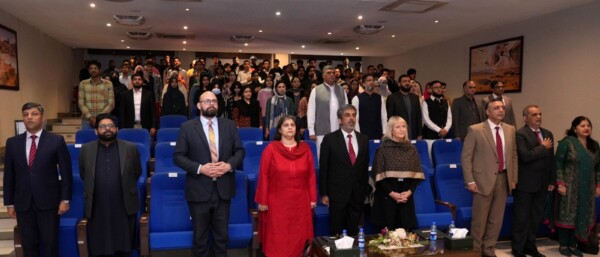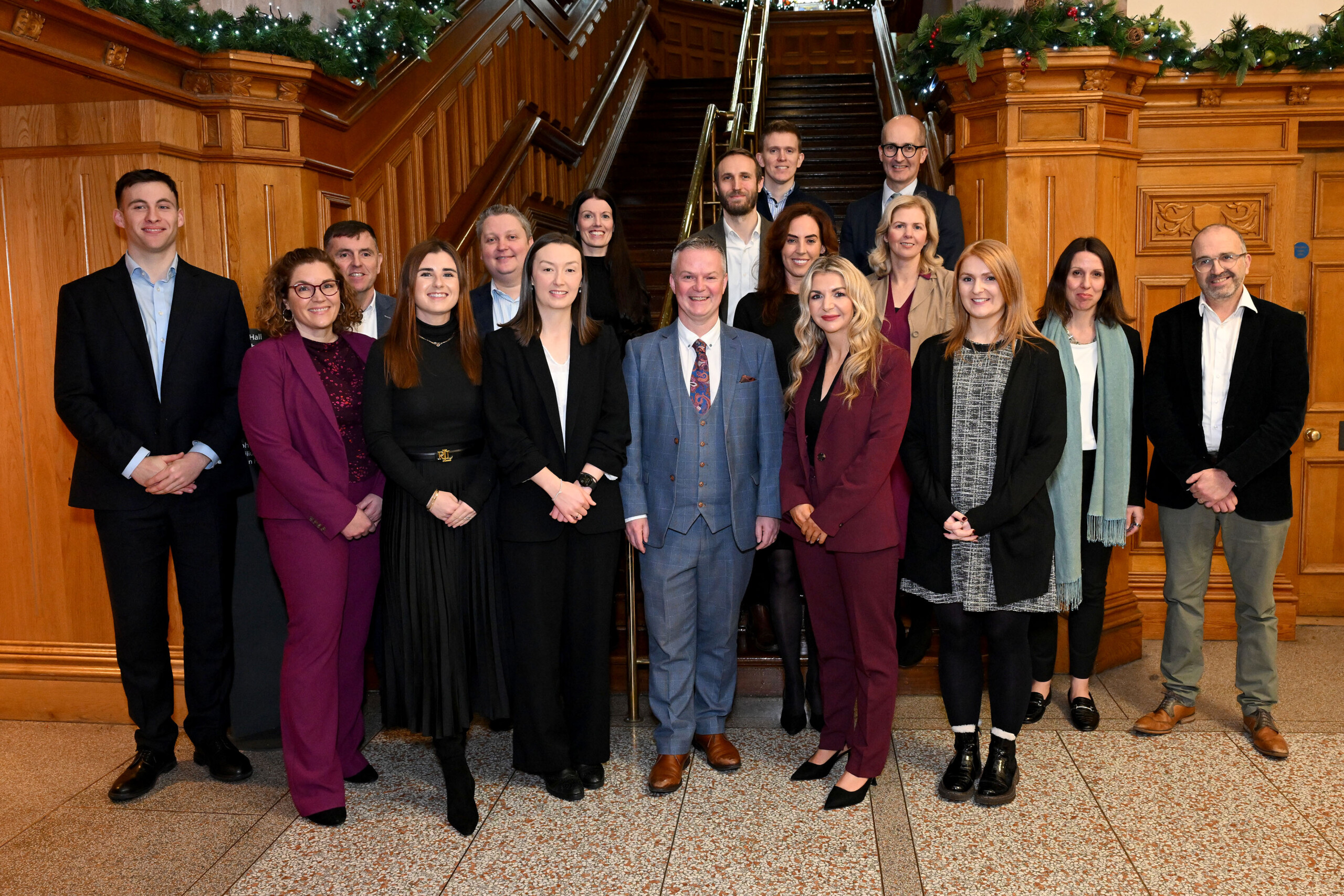
Industry-led skills initiative for Pakistan’s food and drink sector reaches milestone
In November, partners gathered at the National University of Technology (NUTECH) in Islamabad for a celebration event recognising the achievements of an industry-led skills initiative for Pakistan’s food and drink sector. Senior representatives including Pro Rector Major General Qadri and Dean Engineer Nadeem Khalid joined Vice Chancellor Professor Dr Shafiq Ur Rehman, Ben Lawton from the British Council, and NAVTTC Chairperson Gulmina Bilal to reflect on progress and highlight how partnership-driven approaches can strengthen skills development.
A partnership rooted in industry need and built on shared ambition
The Industry Advisory Task Group (IATG) initiative, supported by funding from the British Council’s Going Global Partnerships programme and led by People 1st International in collaboration with the Khyber Pakhtunkhwa Economic Zone Development and Management Company (KPEZDMC) – was established to strengthen skills provision for Pakistan’s food and beverage sector. Designed as a public–private partnership, the project brings employers, training institutions and international partners together to address skills gaps, enhance workforce development and ensure training is aligned with industry needs.
After two years of collaboration, the partnership has delivered tangible progress – bringing the sector together to define its workforce priorities, shaping curriculum around employer input, and building new capacity for high-quality training delivery.
Phase one of the project laid the foundations. Working closely with employers across the Khyber Pakhtunkhwa Economic Zones, the project identified the specific skills gaps, operational constraints and workforce challenges limiting productivity and export readiness. This evidence base shaped the priorities for action and ensured the model reflected the realities of Pakistan’s food and beverage sector.
Phase two translated this insight into delivery. With support from our UK awarding partner Highfield International, the project facilitated the accreditation of the University of Haripur and the National University of Technology (NUTECH) as recognised training centres. An intensive mix of face-to-face and virtual Training of Trainers enabled 22 trainers, twice the initial target, to achieve their Highfield Level 3 Food Safety qualification. Importantly, the cohort included female trainers who now contribute to a more diverse and sustainable national pipeline.
Seeing these trainers receive their certificates this week was a proud moment for everyone involved.
Strengthening systems and opening new pathways
Importantly, the project has gone beyond training delivery. Together, partners have strengthened the systems and structures that enable high-quality, industry-aligned provision to take root. This has included:
- Embedded robust quality assurance systems
- Strengthened alignment with national standards through NAVTTC’s recognition of the programme
- Developed a localised curriculum and toolkit
- Enabled institutional collaboration, culminating in an memorandum of understanding soon to be signed between the University of Haripur, IATG and NWRC (Foodovation Centre, UK)
- Laid the foundation for industry-focused innovation hubs in the Khyber Pakhtunkhwa Economic Zones
The outcomes signal the start of a systemic shift towards employer-driven, internationally benchmarked training that creates real value for Pakistan’s food and beverage sector.
A model for future UK–Pakistan collaboration
The progress achieved through the IATG initiative illustrates the value of a partnership approach that brings together UK expertise with the insight and commitment of stakeholders across Pakistan’s food and beverage sector. Highfield International’s certification model, Northe West Regional College’s capacity-building, and People 1st International’s sector-led approach worked seamlessly alongside the commitment of NAVTTC, the British Council, KPEZDMC, NUTECH, the University of Haripur and industry representatives.
The enthusiasm at the dissemination event confirmed the appetite for scale-up. With NAVTTC, universities and industry partners, we are now exploring:
- Further centre certifications across Pakistan
- Expanded delivery of international food safety training
- New partnerships to strengthen green, digital and inclusive skills
- An expanded UK–Pakistan pipeline of trainer development
Supported by funding from the British Council’s Going Global Partnerships programme. Going Global Partnerships programme supports universities, colleges and wider education stakeholders around the world to work together towards stronger, equitable, inclusive, more internationally connected higher education, science and TVET.



